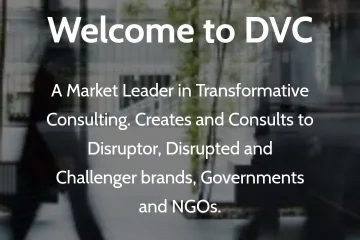Prioritizing a company’s stakeholders involves understanding their impact on the organization’s success, their interests, and how they are affected by the company’s activities. This can be a complex process as different stakeholders have different levels of influence and interests in the company. Here’s a strategic approach to prioritize stakeholders based on the L.O.A.F GenAI 24 process, created by us, at DVC Consultants:
1. Identify All Stakeholders: Begin by identifying all possible stakeholders, including employees, customers, suppliers, investors, government bodies, and the local community. Each has a unique role and level of influence over the organization.
2. Assess Their Influence and Impact: Evaluate each stakeholder’s influence on your business operations and their potential impact on the company’s strategic objectives. Tools like the power/interest matrix can be helpful in this assessment. Stakeholders with high power and a high level of interest in the company should be prioritized.
3. Understand Their Expectations and Interests: Analyze what each stakeholder expects from the company and their key interests. Understanding these aspects can help tailor strategies to engage with them effectively.
4. Evaluate Dependency: Consider how much the company depends on each stakeholder group. High dependency on certain stakeholders(for example, key suppliers or primary customers) elevates their priority because their actions can significantly impact the company’s operations and success.
5. Analyze Risks and Opportunities: Through scenario planning and all simulation, as highlighted in the L.O.A.F GenAI 24 process, assess the risks and opportunities associated with each stakeholder group. Identify how stakeholders could influence the company’s ability to seize opportunities or mitigate risks, especially those related to disruptive technologies and market shifts.
6. Consider Ethical and Social Responsibilities: Factor in the company’s ethical and social responsibilities towards different stakeholders. This includes considering the broader impact on the community, environment, and compliance with legal and regulatory requirements.
7. Dynamic Strategy Refinement: Continuously refine your stakeholder prioritization as market conditions, stakeholder interests, and influence levels change. Use real-time data, customer feedback, and market analysis to keep your strategy agile and responsive, ensuring alignment with evolving stakeholder dynamics.
8. Develop Engagement Strategies: For each priority stakeholder group, develop tailored engagement strategies that address their expectations, influence, and importance to the company’s success. This could range from direct communication channels for investors and customers to community engagement programs for the local community.
9. Monitor and Adjust: Regularly monitor stakeholder relationships, feedback, and the external environment to adjust your prioritization and engagement strategies as needed. This iterative process is crucial for staying responsive to changing stakeholder landscapes.
10. Orchestrate Platform Integration: Leverage tools and platforms that facilitate stakeholder analysis and engagement, ensuring all relevant data and insights are integrated into strategic decision-making processes. This supports the orchestration of collaborative efforts across various stakeholder groups, enhancing decision-making and strategic alignment.
This structured approach, inspired by the principles of L.O.A.F GenAI 24, helps in systematically identifying, prioritizing, and engaging with stakeholders in a manner that supports strategic objectives, mitigates risks, and maximizes opportunities for the company.
If you would like to know more about how this process could work for you contact q.anderson@dvcconsultants.com




0 Comments